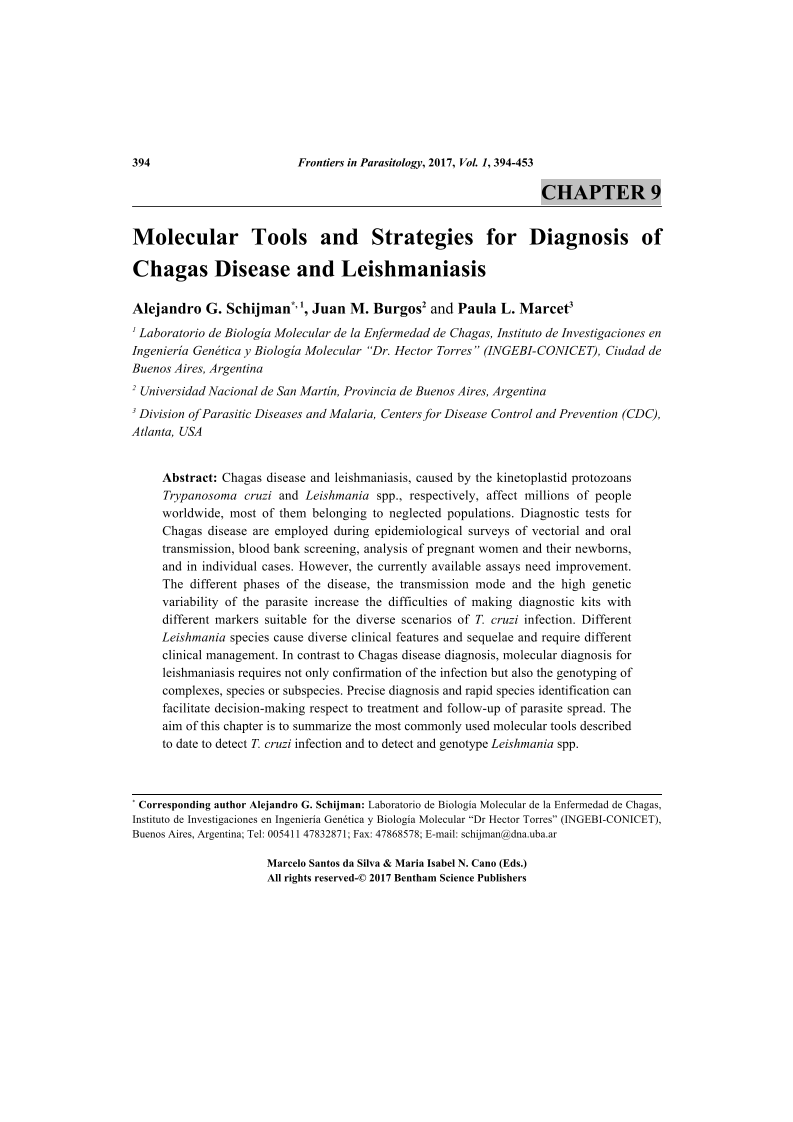Molecular Tools and Strategies for Diagnosis of Chagas Disease and Leishmaniasis

- Authors: Alejandro G. Schijman1, Juan M. Burgos2, Paula L. Marcet3
-
View Affiliations Hide Affiliations1 Laboratorio de Biología Molecular de la Enfermedad de Chagas, Instituto de Investigaciones en Ingeniería Genética y Biología Molecular "Dr Hector Torres" (INGEBI CONICET), Buenos Aires, Argentina. 2 Universidad Nacional de San Martín, Provincia de Buenos Aires, Argentina 3 Division of Parasitic Diseases and Malaria, Centers for Disease Control and Prevention (CDC), Atlanta, USA
- Source: Molecular and Cellular Biology of Pathogenic Trypanosomatids , pp 394-453
- Publication Date: February 2017
- Language: English
Molecular Tools and Strategies for Diagnosis of Chagas Disease and Leishmaniasis, Page 1 of 1
< Previous page | Next page > /docserver/preview/fulltext/9781681084053/chapter-9-1.gif
Chagas disease and leishmaniasis, caused by the kinetoplastid protozoans Trypanosoma cruzi and Leishmania spp., respectively, affect millions of people worldwide, most of them belonging to neglected populations. Diagnostic tests for Chagas disease are employed during epidemiological surveys of vectorial and oral transmission, blood bank screening, analysis of pregnant women and their newborns, and in individual cases. However, the currently available assays need improvement. The different phases of the disease, the transmission mode and the high genetic variability of the parasite increase the difficulties of making diagnostic kits with different markers suitable for the diverse scenarios of T. cruzi infection. Different Leishmania species cause diverse clinical features and sequelae and require different clinical management. In contrast to Chagas disease diagnosis, molecular diagnosis for leishmaniasis requires not only confirmation of the infection but also the genotyping of complexes, species or subspecies. Precise diagnosis and rapid species identification can facilitate decision-making respect to treatment and follow-up of parasite spread. The aim of this chapter is to summarize the most commonly used molecular tools described to date to detect T. cruzi infection and to detect and genotype Leishmania spp.
-
From This Site
/content/books/9781681084053.chapter-9dcterms_subject,pub_keyword-contentType:Journal -contentType:Figure -contentType:Table -contentType:SupplementaryData105

